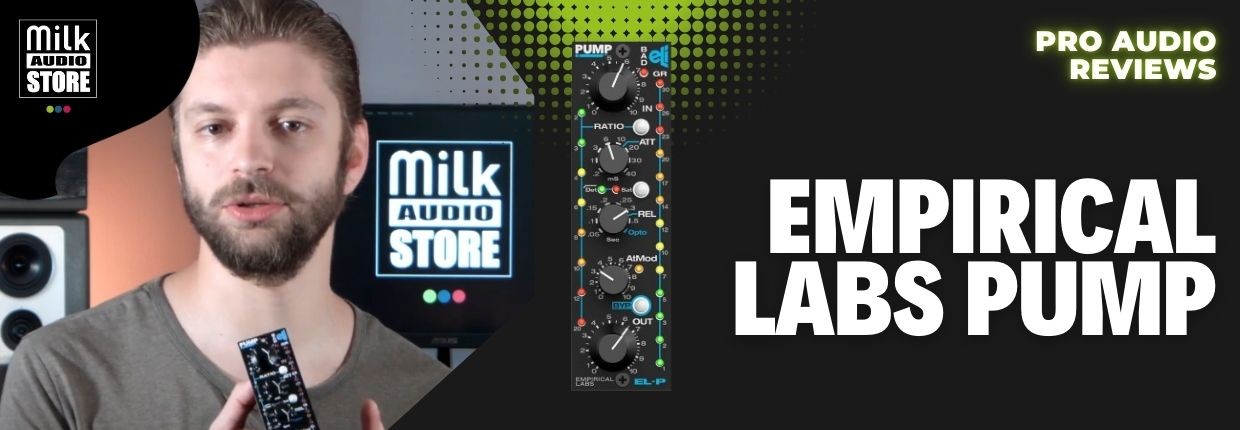Recording, Mixing and Mastering
Published on 01/08/2024

Today we present the latest addition to Empirical Labs, the Pump. The Empirical Labs Pump is a project born in 2014 that was unveiled at last year's NAMM Show in 2023. After a year of beta testing and fixing it has finally arrived in our warehouses. As you know Empirical Labs is a company that has become very famous for its Distressor, a compressor that is in almost every professional recording studio nowadays. In fact, the Empirical Labs Pump is a miniature version of the Distressor in a 500 size that makes it more versatile, more portable and immediate in use.
On the Pump, in fact, we find the same parameters present on the Distressor with a few more things that we are going to see and that, however, in no way make us miss the compressor in rack format. So let's go over the controls of this fantastic module in detail.
In the Pump as the first control we find theInput Gain accompanied by the indicator that Empirical Labs has named BAD, which goes to indicate the clipping of the signal. After that we find the Ratio, Attack, Release controls, the iPass Filter with the Saturation controller, and theOutput Gain. Compared to the Distressor what's extra is theAtMod, which we'll talk about in a moment.
The compression ratios, or Ratios, range from 1 to 1 to 20 to 1 and are easily selected using the button provided. With the LEDs off we will have the ratio of 1 to 1, and by pressing the button repeatedly we can go and vary the 3 different ratios available.
One very convenient and very interesting thing is that by holding down the same button you will be able to go back to the previous ratio. This can come in handy in the case of AB comparisons.
Let us now talk about the attack and release parameters. The potentiometers are not stepped, but Empirical Labs has thought of a really clever thing. In fact, when we go to change the value, the minus 30 compression LED is going to light up. So if we go from 3 to 6, for example, you'll see the LED light up, which will make recall very easy.
The release, as on the famous Distressor, has the Opto feature, which makes the pump circuit work as if it were an optical compressor and goes to emulate the classic sound of an optocompressor.
The saturation of the Empirical Labs Pump adds soft clipping and harmonic to our signal. It is a fixed, predetermined value, but it can be increased or decreased depending on the various attack, release and ratio settings we impose on the compressor.In contrast, the high-pass filter is very useful to avoid unnatural pumping and thus go to remove low frequencies from the detector signal.
These two parameters can be activated via the dedicated button. Pressing it a first time activates the saturation, while pressing it a second time activates the high-pass filter; finally, pressing the button the third time activates both. As on the ratio control, here too we can return to the previous setting simply by holding down the button.
At the tail end of this we find the potentiometer for varying the output level. We also find, of course, the bypass control, which is a True Bypass. The moment the compressor is bypassed, as you can see, all the LEDs go on to indicate that precisely the compressor is in the bypass state and is not working.
Instead, let us now look at the most important new feature of theEmpirical Labs Pump. It is in fact the first time in history that a parameter has been introduced on a hardware unit that is, however, derived from a plugin. We are in fact talking about AtMod (Attack Modulation) a function that is introduced by Empirical Labs in their Rouser plugin.
What doesAttack Modulation do? It allows us to compress as much as we want but without losing that attack we need. How does it do that? By going to vary the slope of the initial attack so that we don't lose the transient but maintain the desired compression.
The AtMod is adjustable via the potentiometer provided, accompanied by an LED indicator that will light up when this function kicks in.
Join us today and get 5% off your next order!

Empty cart